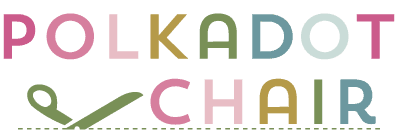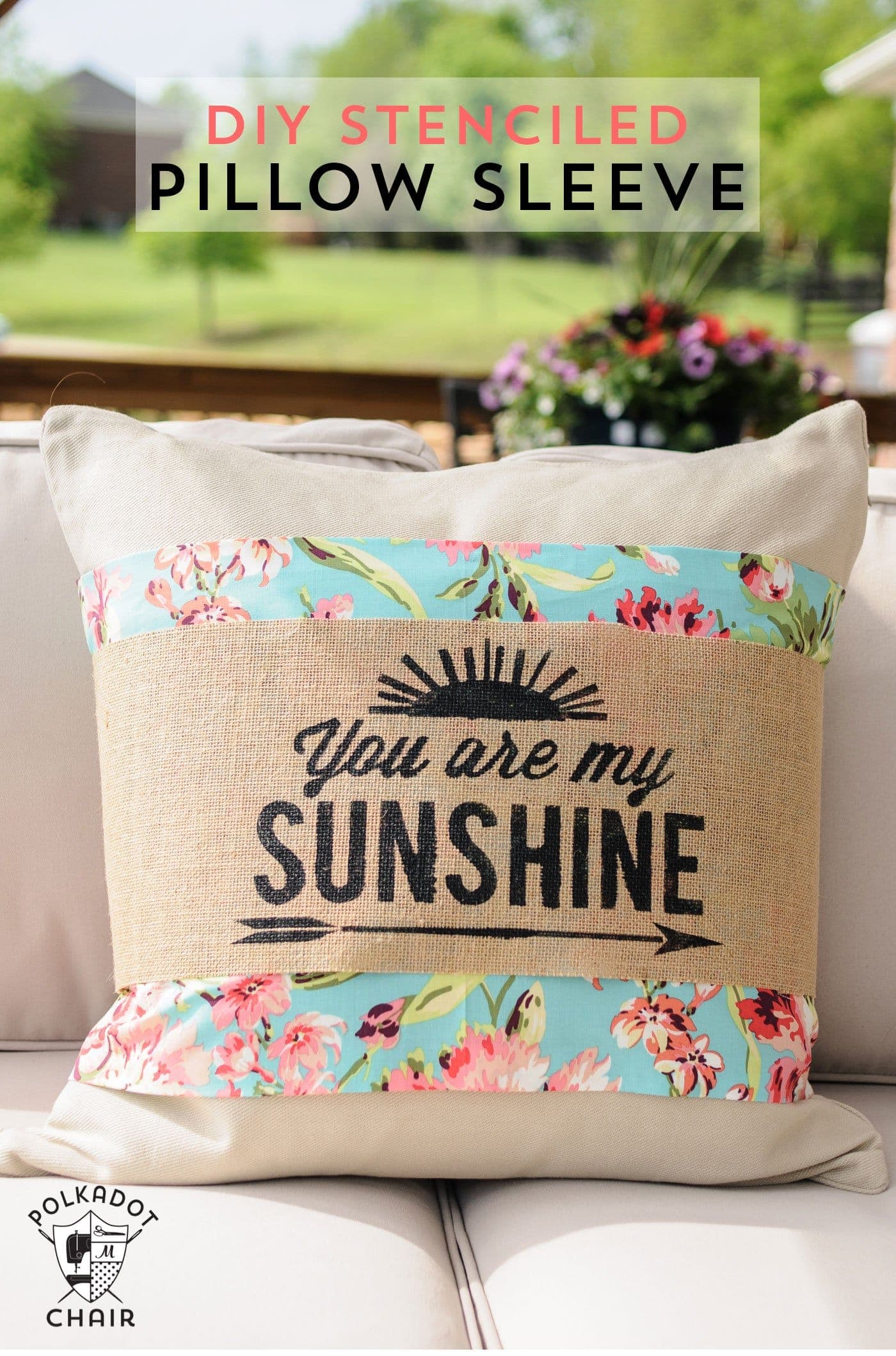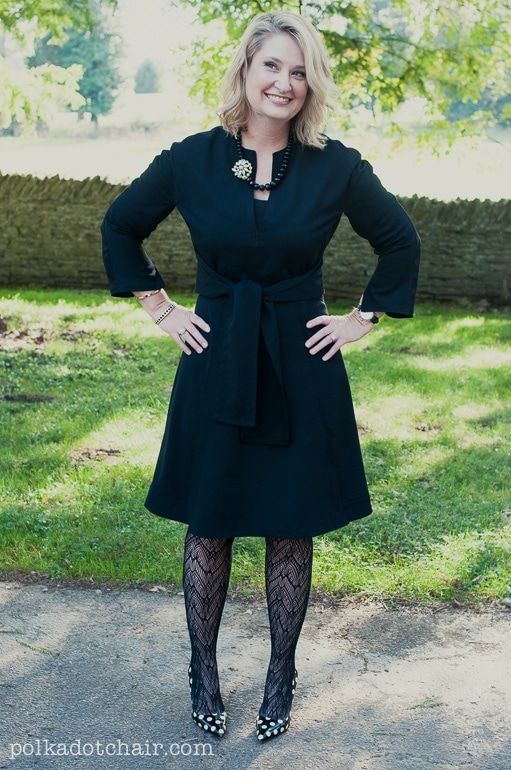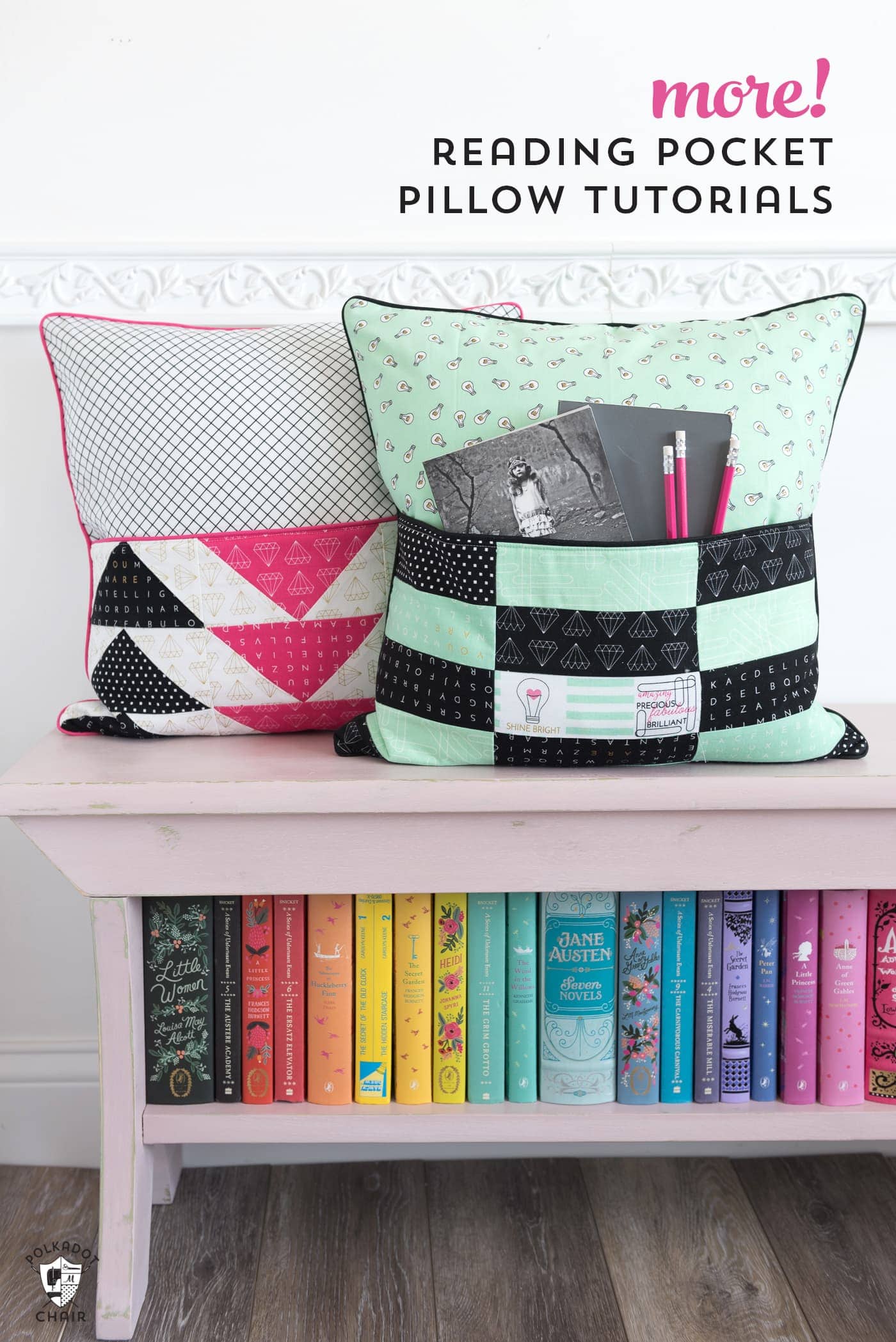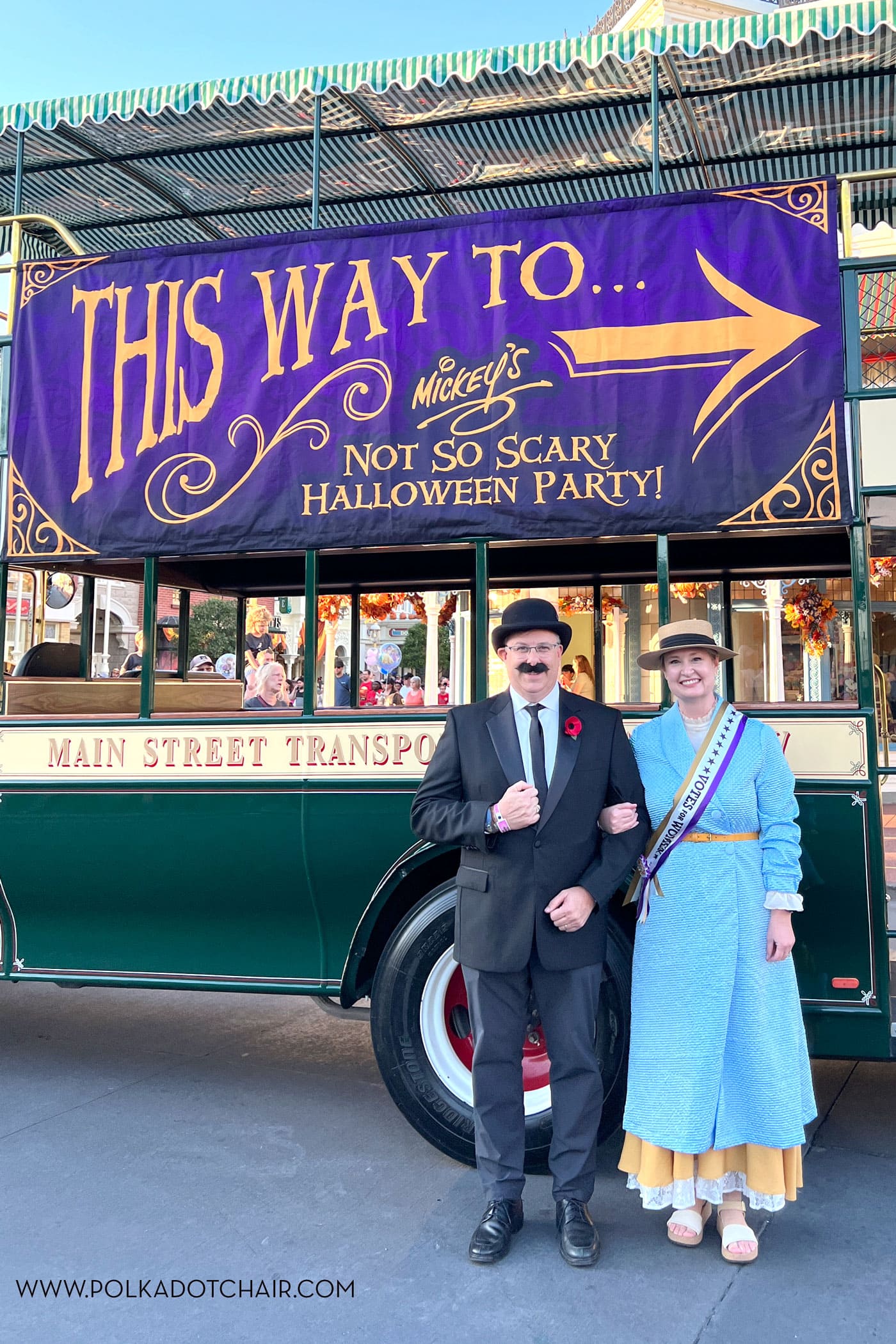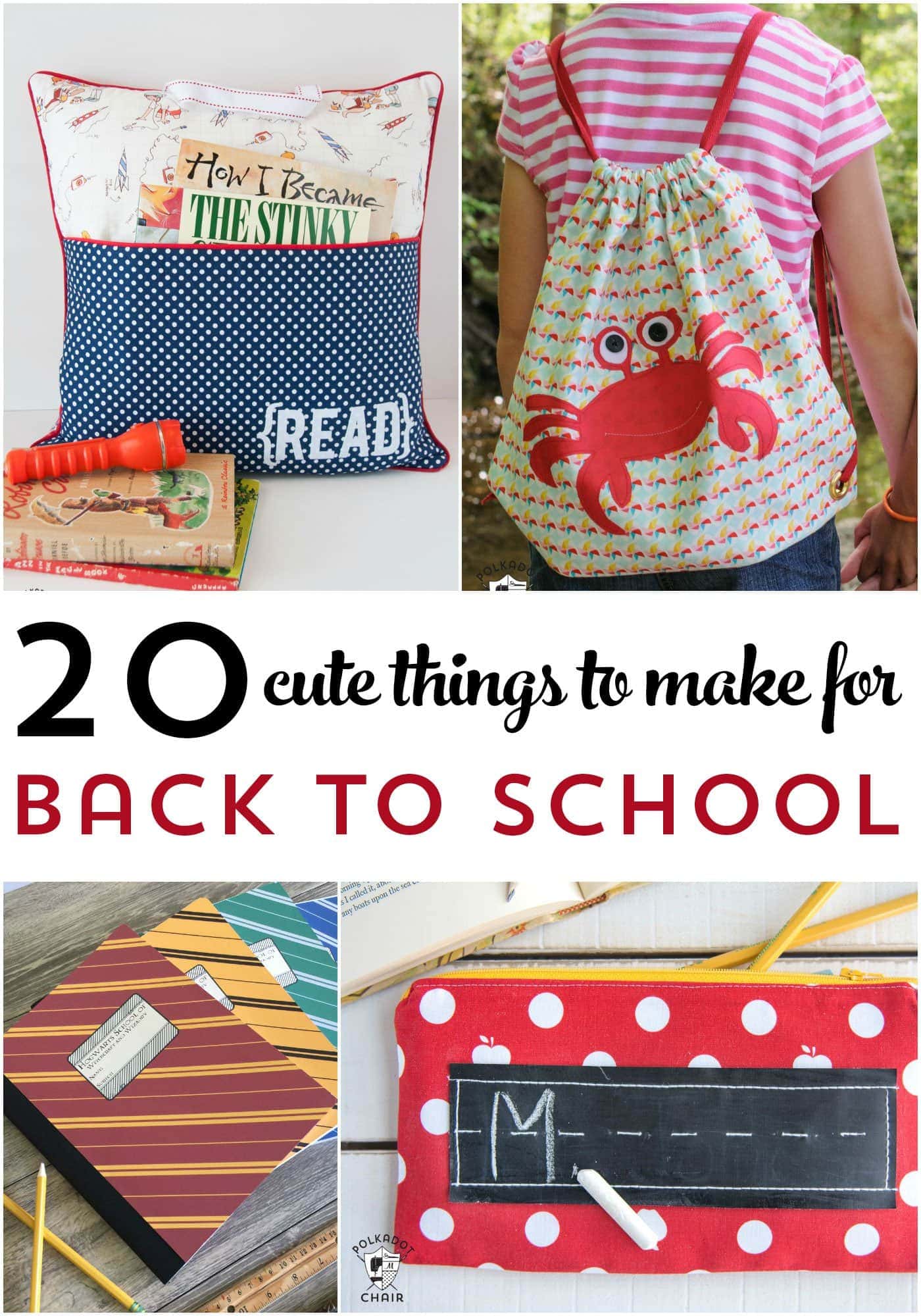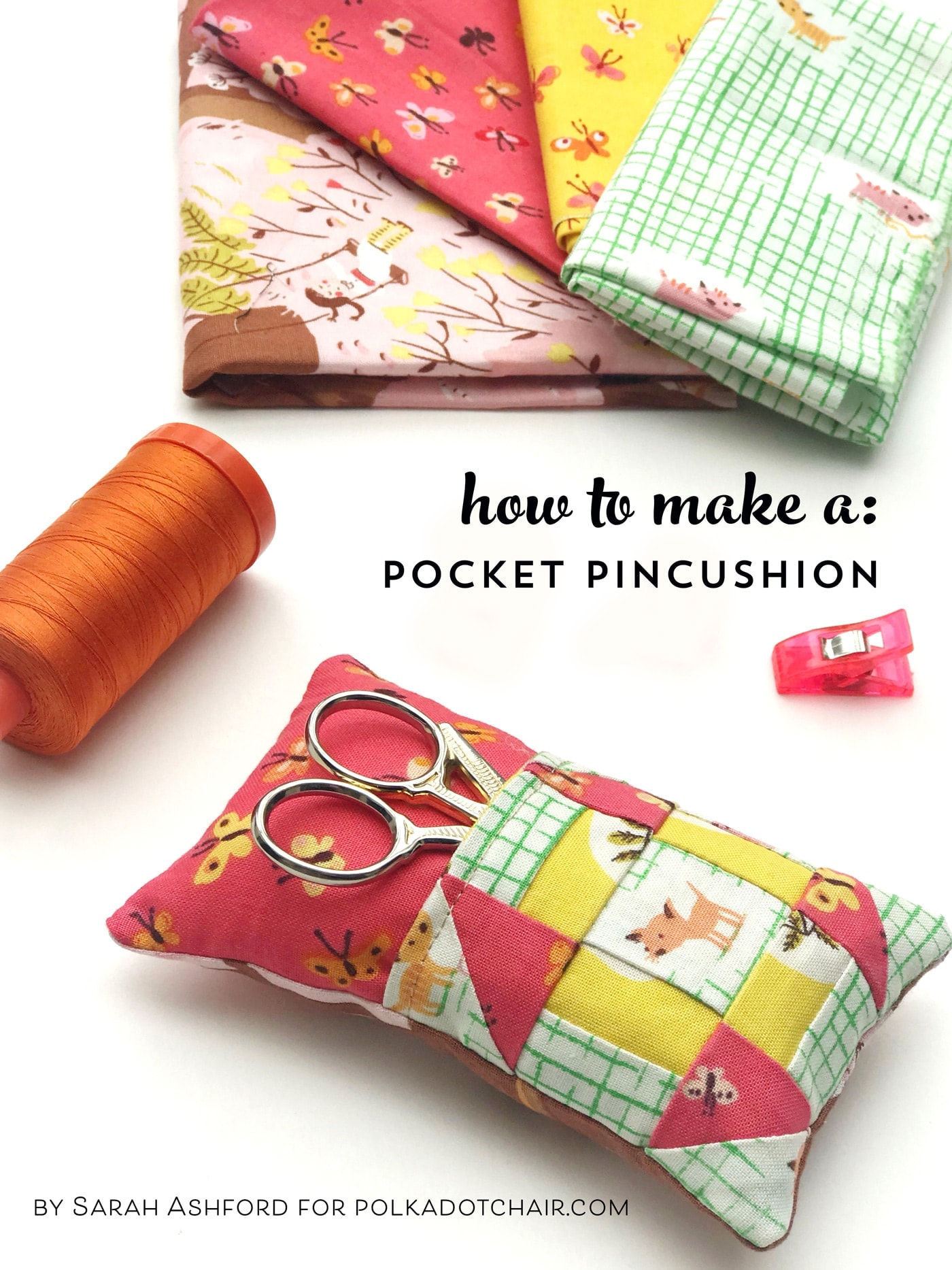Sewing Machine Needles Explained & Printable Chart
Have you ever wondered what all those colors and numbers on sewing machine needles are for? Do you struggle to decide which needle is the best choice for your current project? Today I’m excited to reintroduce my Sewing Lessons series with our first lesson on Sewing Machine needles! Find out which needle to use for which project and what all those colors and numbers mean. We’ve even created a free sewing needle size chart for you!
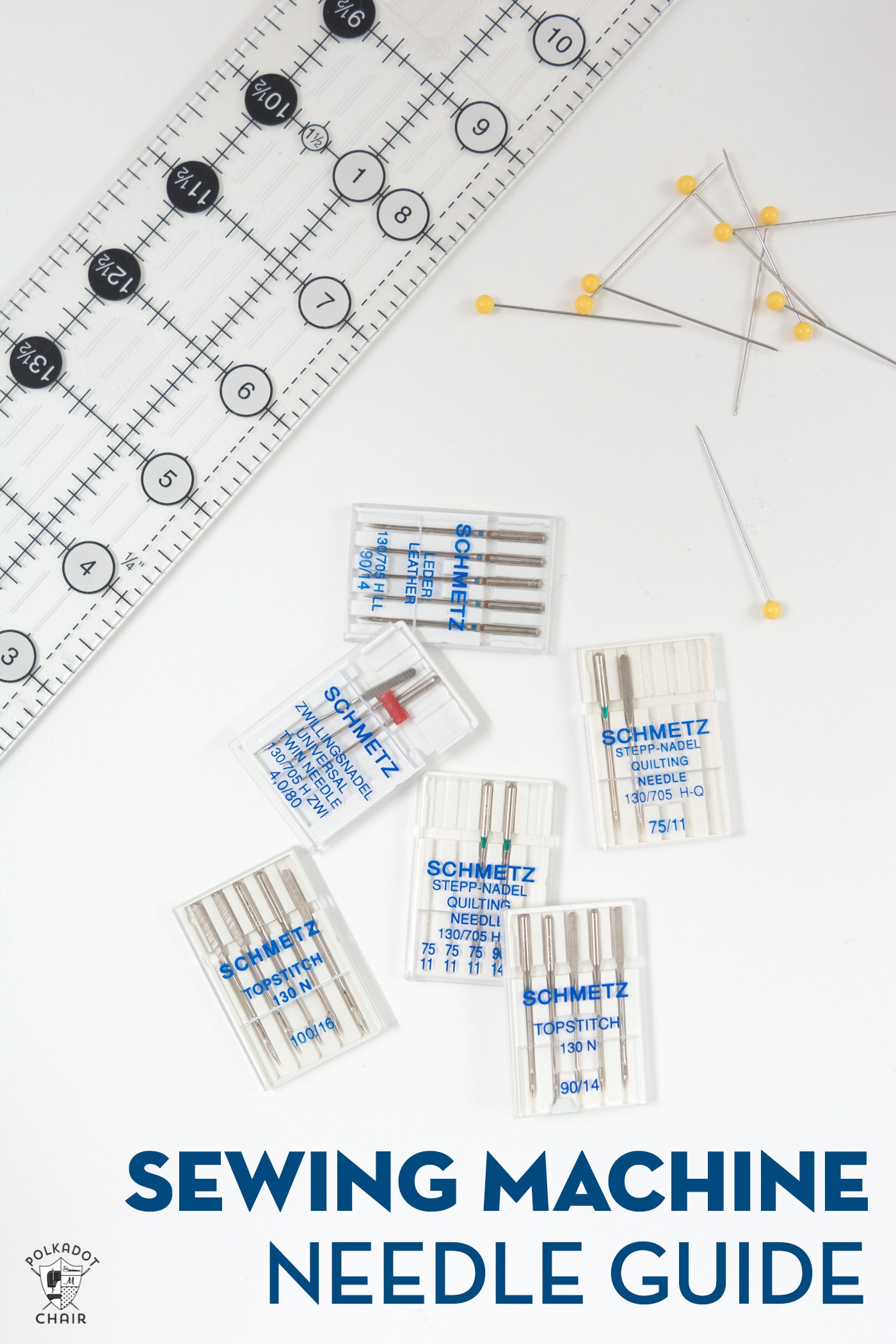
Are there Universal needles permanently on your home machines because you don’t know the right needle to use for your project.
If so, that’s not a big deal! Most of the time, I keep a universal needle on my machine. However, if at times you find yourself “stuck” because your machine won’t sew your fabric or maybe your stitching lines are not clean, then you may need a different machine needle.
Then read on for an explanation of the “coding” of sewing machine needles and how to choose the right one for every project. This article refers specifically to sewing machine needles not hand-sewing needles.
Before we begin, let me preface this by saying every time I post regarding a specific sewing or quilting technique, I get a lot of people telling me I’m wrong. Some even use very unkind terms when telling me this. This article was written as a cooperation between myself and another experienced quilter. Between the two of us, we have a lot of experience.
When it comes to sewing, I believe there is more than one right answer to a lot of questions. One method is not necessarily wrong, and another is right. Rather each option has its pros and cons. If you have a favorite needle, please let us know in the comments section and tell us why you love it! However, refrain from offering unkind opinions on the subject.
What The Color on the Needle Means
Sewing machine needles will either have one or two colored bands just below the shank (that’s the thicker bit at the top), or the whole shank will be one color. Unfortunately, to make things a little more confusing, different needle brands use different colors to denote different information.
However, the systems of two bands below the shank or the whole shank color always point to the same type of information.
The first three needles in the photo below use the two-band system:
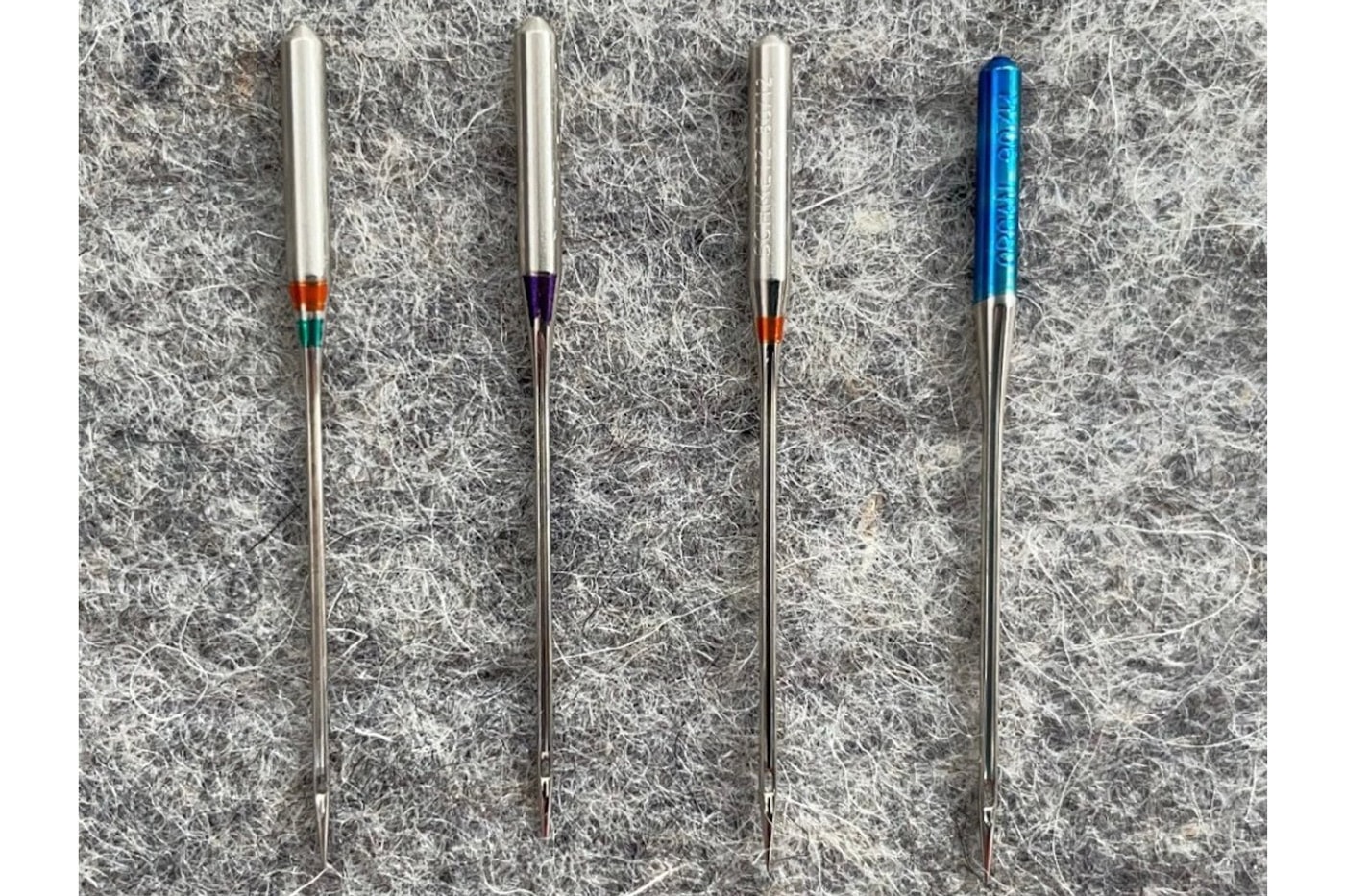
– the upper band tells you the type of needle
– the lower band tells you the size of the needle
And the needle on the far right of the photo is using the colored shank system.
As I said early, different brands of needles use different colors, meaning a quilting needle from one brand will have a different color from another brand.
With this in mind, it’s hard to list all the colors because it gets rather confusing, so I would recommend finding a chart for your preferred brand. But always keep in mind that the upper bands shows the type of needle, and the lower band shows the size.
What the Numbers Mean
Happily, the numbering system of needles is much more universal. The machine needle size numbers tell you the size of the needle and are written in two parts e.g. ?? / ??.
Both numbers actually give you the same information; one shows the European size number (most commonly between 60 and 100, increasing in 10s), and the other shows the American number (most commonly between 8 and 16, increasing in 2s). A higher number of machine needle size indicates a larger (or thicker) needle. Pretty simple sizing system right?
Depending on where you purchase the needles may mean that the order of those two numbers varies, but, as I said earlier, they actually give you the same information. The bigger the number, the heavier the fabric with which it is intended to be used.
The numbering sizing is usually stamped onto the shank of the needle, as you can see from the photo below.
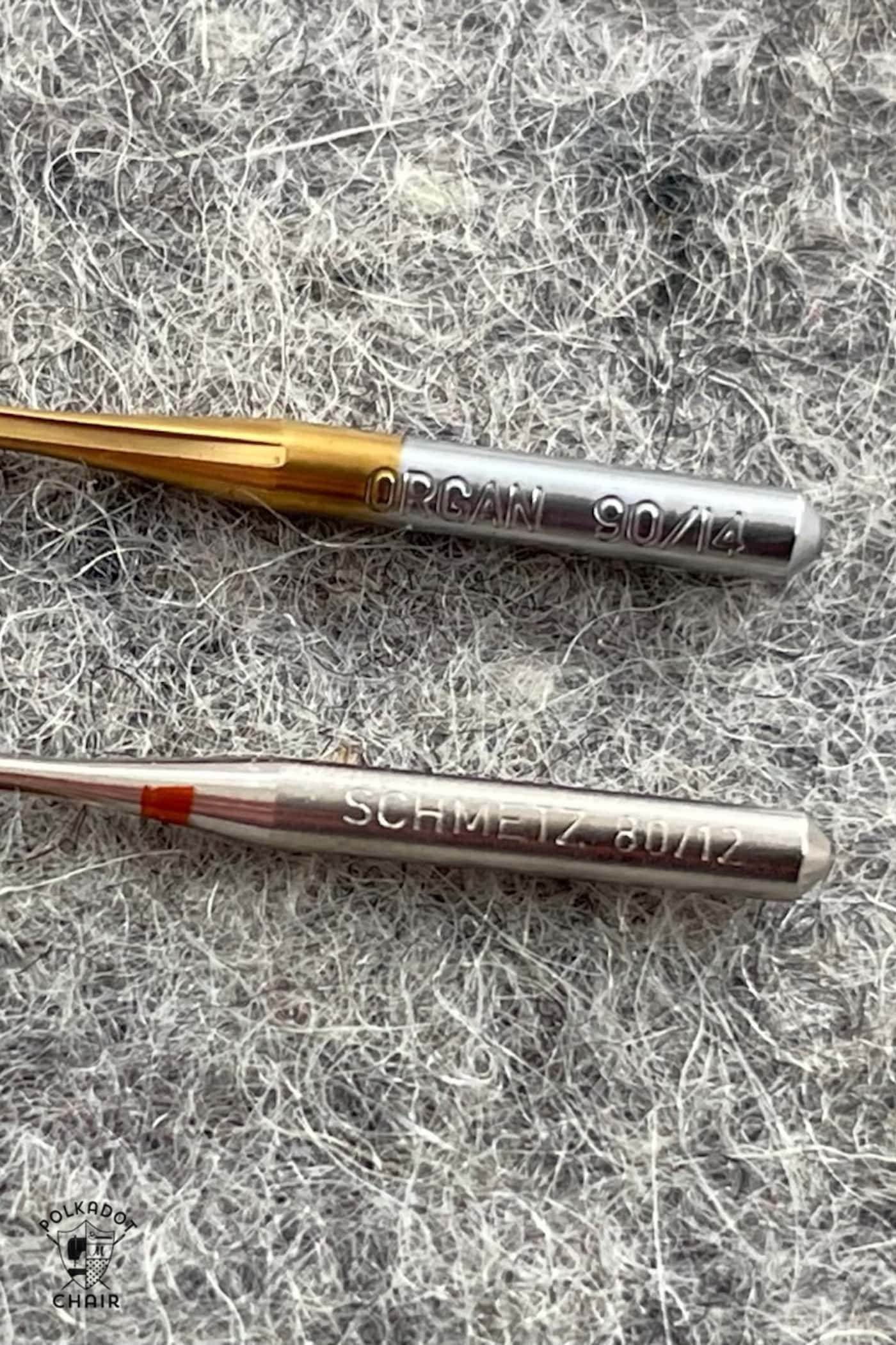
Generally speaking, the following numbers would be suitable for these type of fabric:
100/16 – heavy – denim, canvas, upholstery, etc
90/14 – medium – linen, curtain fabric, wool, etc
80/12 – medium – quilting cotton, shirting, etc
70/10 – light – cotton lawn, voile, etc
60/8 – very light – delicate silks, organza, etc
Needle Types and Their Uses
Universal Needle
Although the most commonly used needle type, the name doesn’t refer to the relevant fabric/project more that this is essentially the “base” needle design which has had no alterations made to suit specific uses.
Quilting Needle
A quilting needle is stronger with a tapered point so the needle can go through the layers of a quilt without breaking the thread or fabric. Quilting needles is great for machine quilting or for piecing. A denim needle is also great for piecing.
Denim Needle
Denim needles have durable sharp points that are designed for heavy fabrics like denim. Their sharp nature and strong needle shank make them great for sewing most woven fabrics. Choose a smaller number needles (70 or 80) for light to medium wovens and 90 for heavier wovens.
Top Stitch Needle
Top Stitch needles have very sharp points with a large eye for heavier top-stitching threads. If you are not going to be top-stitching with a heavyweight topstitch thread (a 40 or 30 weight), a Microtex needle is also great for top-stitching since it has a larger eye.
Embroidery Needles
Large eye for thicker thread mostly used with machine embroidery machines and embroidery thread (not to be confused with embroidery floss, which is a different product).
Ballpoint Needle or Jersey Needle
Ball point needles, jersey needles, or stretch needles have point that isn’t as sharp and slightly rounded, so the needle pushes through the weave of the fabric rather than cutting/stabbing through. This prevents the needle from snagging the fibers in knit fabrics or stretch fabric.
Leather Needle
This needle “punches” the leather as it sews, which allows the thread to pass freely though the material and the machine. I would not try to sew leather without a leather needle.
Microtex Needle
In my opinion, Microtext needles don’t get nearly the attention they should! They are very sharp needles with a very sharp point and are great for most sewing projects. If you are sewing with a silk or rayon fabric, they are a must. They are wonderful to use on lightweight fabrics. However, they are also great for top-stitching and quilt piecing due to their super sharp nature. They are not recommended; however, for heavier fabrics, a Jeans/Denim needle would be the better choice.
There are other needle types too for specific fabrics and thread types (their use is pretty clear from the name) e.g., denim, leather, metallic, etc.
I use a 80/12 Universal needle for patchwork piecing, even though it might not be a perfect choice.
I use a 90/14 topstitching needle for free-motion quilting, the size of the needle helps it get through the quilt layers easily, and the large eye helps with thread wear/breakage during quilting.
Specialty Needles
Many other specialty needles are used for a variety of specific uses. I won’t cover them in depth here, but if you are sewing with any synthetic fabric or thread (like lycra, spandex, or metallic thread), you will want to purchase the specialty needle for that fabric. Most of them are easy to identify since the needle name explains what it sews (for example metallic needles).
A twin needle is one needle shank with two-needle eyes attached. It is used to create a double seam and is most commonly used when hemming knit fabrics.
I use a 80/12 Universal needle for patchwork piecing, even though it might not be a perfect choice.
I use a 90/14 topstitching needle for free-motion quilting, the size of the needle helps it get through the quilt layers easily, and the large eye helps with thread wear/breakage during quilting.
How Does Thread Weight Factor In?
If you are sewing with a heavier weight thread (for example, denim thread), you will need a larger eye on your needle so that the thread can pass through the eye of the needle smoothly. Top stitch, denim, and tapestry needles have long eyes which to accomplish this.
Needle Storage
My biggest top tip for not getting confused by your needle selection and keeping track of what you are using is to keep it organized. Although the information is there on every needle, it can be hard to read and/or a little confusing (especially if you buy different brands).
If you keep your needles organized, so you know without even looking closely what type of needle you are putting into your machine, then you’ll overcome a lot of confusion and difficulties.
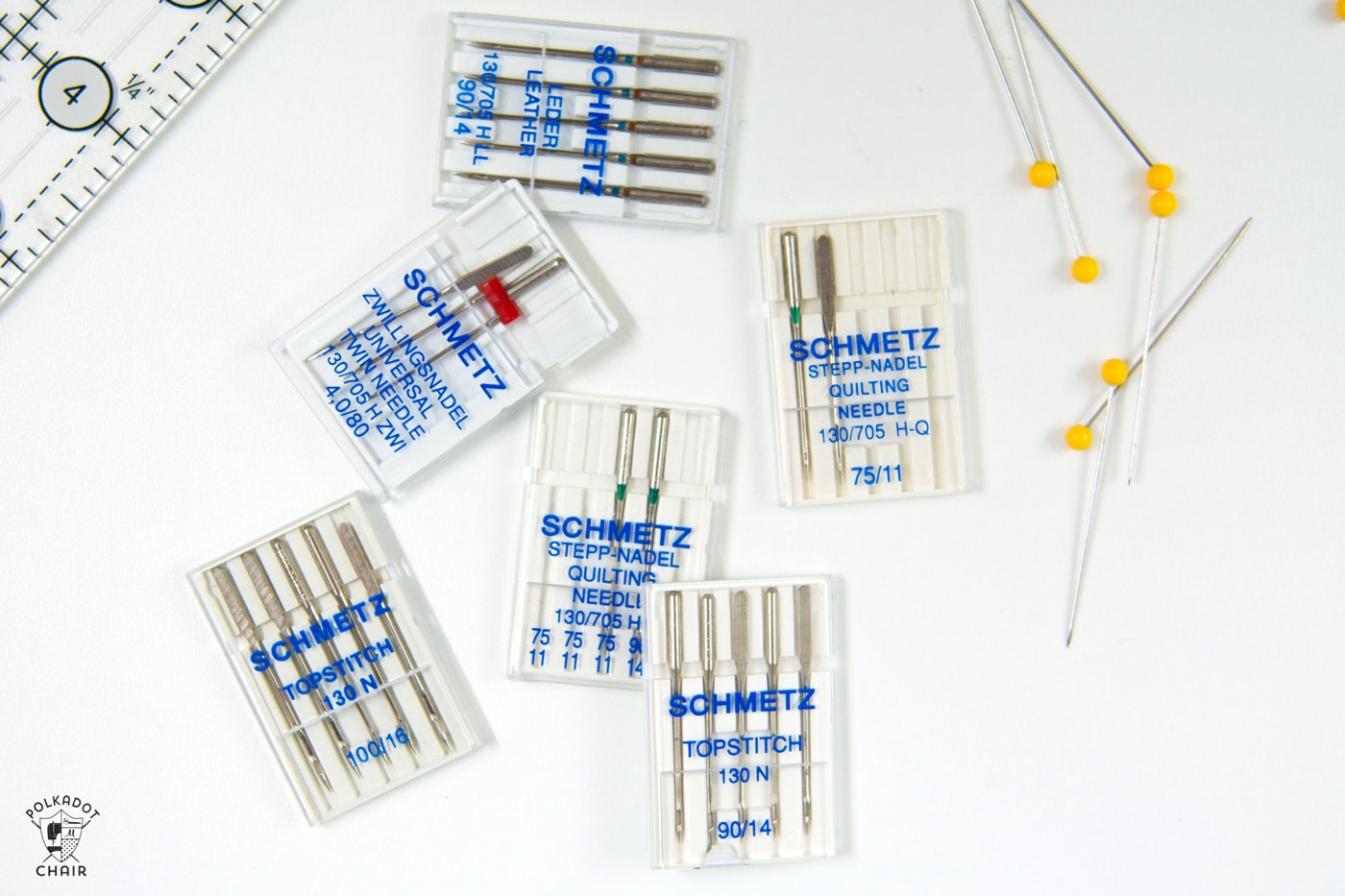
The little plastic case that most needles are sold in are good for keeping needles stored and organized (plus they have the type and size printed on the box!), but if you are anything like me, you might end up with loads of these tiny boxes dotted all over the place and, perhaps even more importantly, you won’t know which is the “current” needle in the box and which are still brand new.
This one from PatternTrace (one of the authors of this article is based in the UK; at this time, I don’t see that this box is available in the US; you could use any plastic divided box.
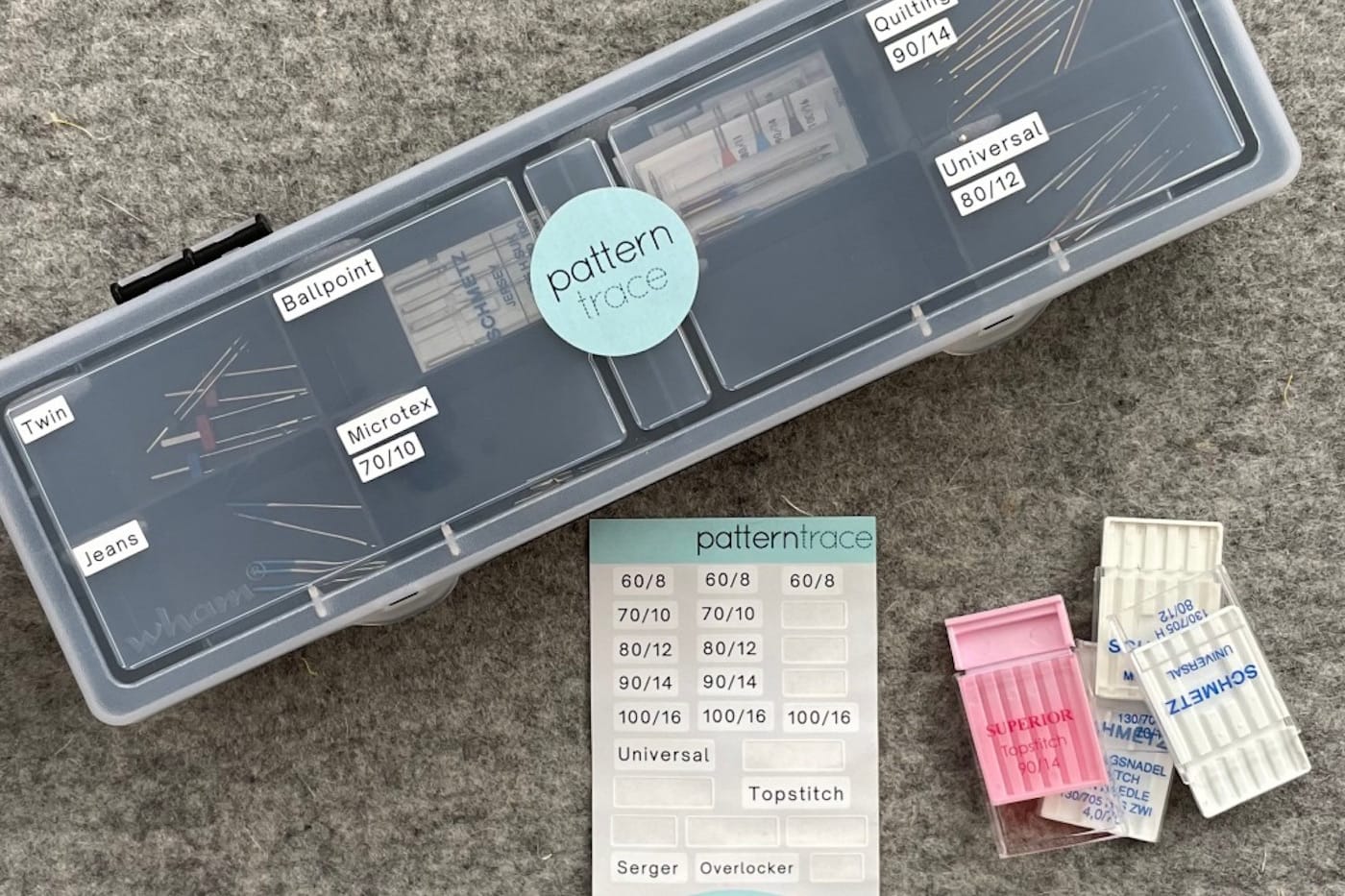
You can also buy a simple pincushion with a grid. When you finish with a needle, simply place it in its proper spot.

Free Printable Sewing Needle Size Chart Cheat Sheet & Inventory Tracker
If you are still a bit lost and would like a fun “cheat sheet” to keep near your sewing machine, I’ve used my handy dandy Illustrator skills to create a quick reference needle size chart and inventory sheet.
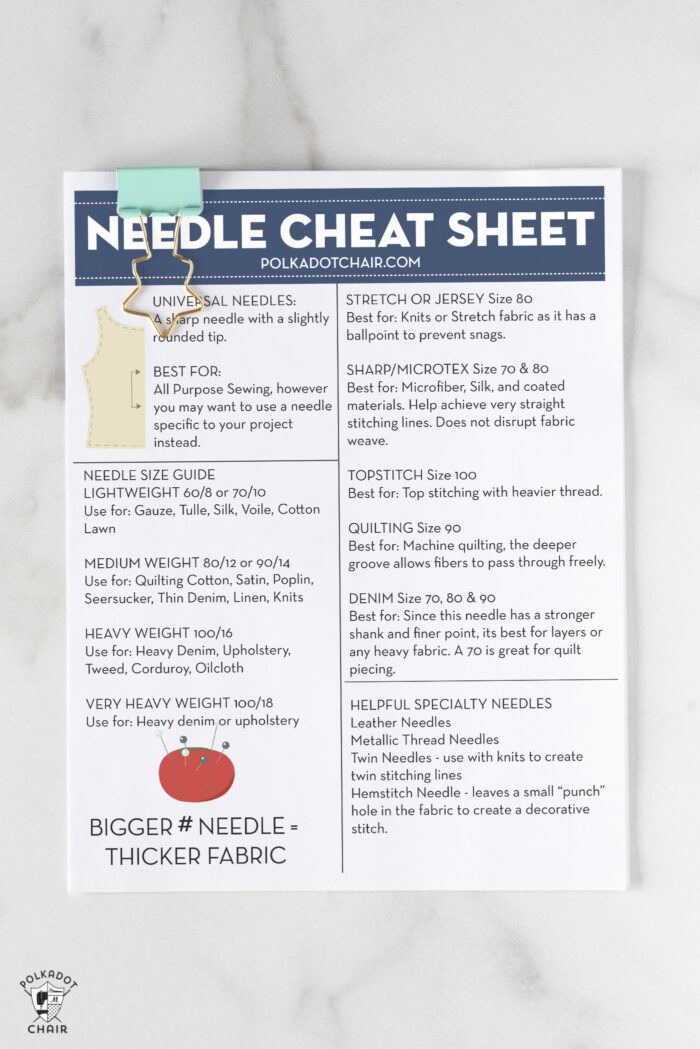
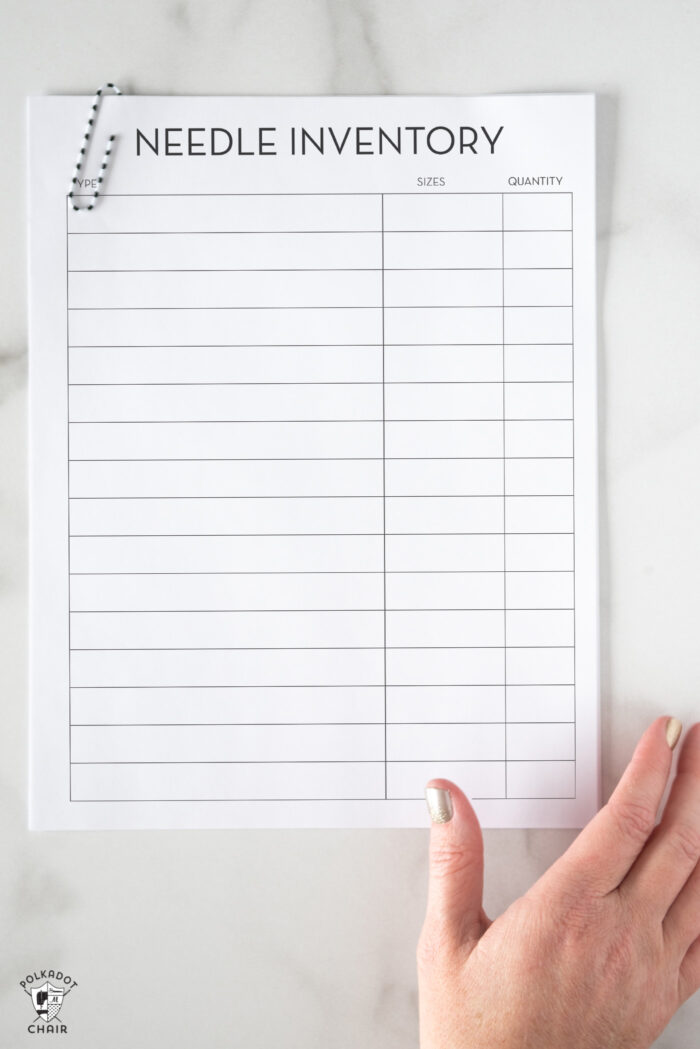
To get printable, fill out the form below. You need to fill out the form on this page, not our general subscribe page (otherwise, how do we know which of our hundreds of free printables to send you?)
